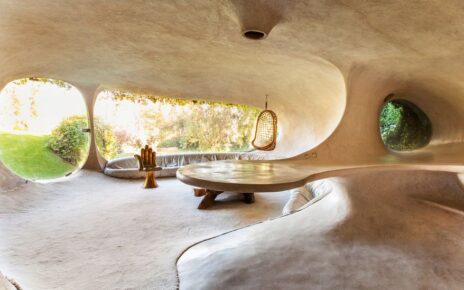Содержание
Celebrating Diversity: Tailoring Rhinoplasty to Honor Your Ethnic Beauty
In an era where beauty standards are increasingly recognized as diverse and multi-dimensional, the realm of cosmetic surgery is evolving to match. This shift is especially evident in the practice of rhinoplasty, where the one-size-fits-all approach no longer holds sway. Today, the focus is on honoring and enhancing one’s ethnic features, not erasing them. This piece offers invaluable insights into the diversity of beauty and serves as a cornerstone for those considering rhinoplasty.
The Diversity of Nose Shapes Across Races
Nose shapes vary significantly across different ethnic groups, each bearing traits that reflect the unique heritage and genetic background of its people. For example, African and Afro-Caribbean noses often feature wider bases and fuller nostrils, while Asian noses might have a flatter bridge and rounder tip. Caucasian noses, on the other hand, tend to have a narrower bridge. Recognizing and appreciating these differences is crucial, as it influences the approach to rhinoplasty. Understanding that different types of noses have their own beauty and uniqueness is the first step in ensuring that cosmetic procedures like rhinoplasty respect and enhance these ethnic features. Let’s take a quick look at most well-known nose types by ethnicity.
African and Afro-Caribbean Nose Profile
Also known as the Nubian Nose, African and Afro-Caribbean noses are characterized by a wide base, fuller nostrils, and a less pronounced bridge. These features contribute to a rich facial expression and are a testament to the diverse genetic heritage of people from African and Caribbean regions. Rhinoplasty approaches aim to enhance these features while maintaining their natural beauty.
Asian Nose Profile
Asian nose types typically feature a flatter bridge and a rounder, bulbous tip, with wider nostrils compared to Caucasian noses. These characteristics are prominent among many East and Southeast Asian ethnicities, reflecting the aesthetic diversity within these cultures. Rhinoplasty for Asian noses often focuses on augmenting the bridge while preserving the nose’s natural harmony with the face.
Caucasian Nose Profile
Caucasian noses are known for their variability but generally tend to have a narrower bridge and a more pronounced nasal tip. Some may exhibit a hump on the nasal bridge. The goal of rhinoplasty in Caucasian patients often involves refining the bridge and tip to achieve a harmonious balance with the rest of the face.
Middle Eastern Nose Profile
Middle Eastern ethnic noses are distinguished by a strong, prominent bridge and a tendency towards a longer, more defined nasal tip. These features are a hallmark of Middle Eastern beauty, embodying the ethnic group’s distinct characteristics. Rhinoplasty in this context may focus on reducing the bridge’s prominence or refining the tip, all while respecting the individual’s ethnic identity.
The Evolution of Rhinoplasty: From One-Size-Fits-All to Personalized Procedures
The process of rhinoplasty from generic procedures to tailored, individualized approaches mirrors the broader societal acknowledgment of diverse beauty standards. Initially, rhinoplasty aimed to conform every nose to a narrow set of ideals, often disregarding the patient’s ethnic background and personal identity. However, advances in surgical techniques and a deeper understanding of aesthetic diversity have revolutionized this field. Surgeons now have the tools and knowledge to create results that harmonize with each patient’s facial features, ensuring that the surgery enhances their natural beauty without erasing their ethnic identity.
Importance of Choosing a Surgeon with Ethnic Rhinoplasty Experience
Selecting a surgeon experienced in ethnic rhinoplasty is paramount. Such a surgeon understands the subtleties of different nose shapes and how they integrate with the patient’s overall facial aesthetics. “Appreciating the uniqueness of each ethnic nose shape is not just an artistic endeavor but a scientific one,” an expert might say, highlighting the precision required in these procedures. A surgeon skilled in ethnic rhinoplasty will work to preserve the character and identity of the patient’s features while making the desired adjustments, ensuring the outcomes are both beautiful and authentic.
Understanding Your Nose: Insights from the Blog Post
By understanding the characteristics and variations of nose shapes across races, individuals can approach their consultation with a clear vision of how they want their nose to complement their ethnic background. This knowledge enables a collaborative relationship with the surgeon, where the patient’s informed desires and the surgeon’s expertise converge to create the best possible outcome.
Conclusion
The landscape of cosmetic surgery is beautifully evolving to embrace and celebrate the diversity of human beauty. Rhinoplasty, with its shift towards personalized, ethnicity-respecting procedures, stands as a testament to this progress. It’s a recognition that beauty is not homogenous, and the uniqueness of each individual’s ethnic features should be honored and preserved. For those considering rhinoplasty, starting with resources like the insightful blog post about different nose shapes by race can provide a solid foundation for making informed decisions that respect their heritage.
FAQs
How does ethnic rhinoplasty differ from traditional rhinoplasty?
Ethnic rhinoplasty takes into account the unique features and cultural backgrounds of patients from non-Caucasian ethnic groups. It focuses on enhancing the nose while preserving the individual’s ethnic identity, as opposed to traditional rhinoplasty which may adhere to a more standardized aesthetic ideal.
Can ethnic rhinoplasty change the way I look completely?
The goal of ethnic rhinoplasty is not to change your appearance completely but to refine and enhance your nasal features in a way that harmonizes with your overall facial structure while respecting your ethnic background. It’s about balance, not transformation.
Will my nose still look natural after ethnic rhinoplasty?
Yes, when performed by an experienced surgeon, ethnic rhinoplasty aims to produce results that look natural and in harmony with your ethnic background and facial features. The key is subtle changes that enhance your natural beauty.
How do I choose the right surgeon for ethnic rhinoplasty?
Look for a surgeon with extensive experience in ethnic rhinoplasty and a deep understanding of the anatomical differences among various ethnic groups. It’s also helpful to review before-and-after photos of previous patients from similar ethnic backgrounds and to discuss your goals during the consultation.
Is the recovery time different for ethnic rhinoplasty?
Recovery time for ethnic rhinoplasty is generally similar to that of traditional rhinoplasty. Most patients can return to normal activities within a week or two, but it may take up to a year for all swelling to subside and the final shape to emerge fully.
How do I ensure my cultural identity is respected during the rhinoplasty process?
Communication with your surgeon is key. Clearly express your desires and concerns about preserving your ethnic identity during the initial consultation. An experienced surgeon in ethnic rhinoplasty will understand the importance of respecting and maintaining your cultural identity through the procedure.
 пиши статьи за деньги
пиши статьи за деньги 

 :
:

